Finding the right indoor cycling programs for beginners can be difficult. There is so much to consider that by the time you sit down to research, you’ve forgotten what the whole point was to begin with.
Don’t stress; we’ve got you covered with everything you need to know about getting started with an indoor cycling program, including what you’ll need, what to look for, and how to maintain your program in the long run.
Key Takeaways
- Finding the right bike is vital to success
- Select a program that works with your fitness level and time availability
- Start slow and work your way up
- Consistency is key to long-term results
- Setting SMART goals can help you reach your desired outcome
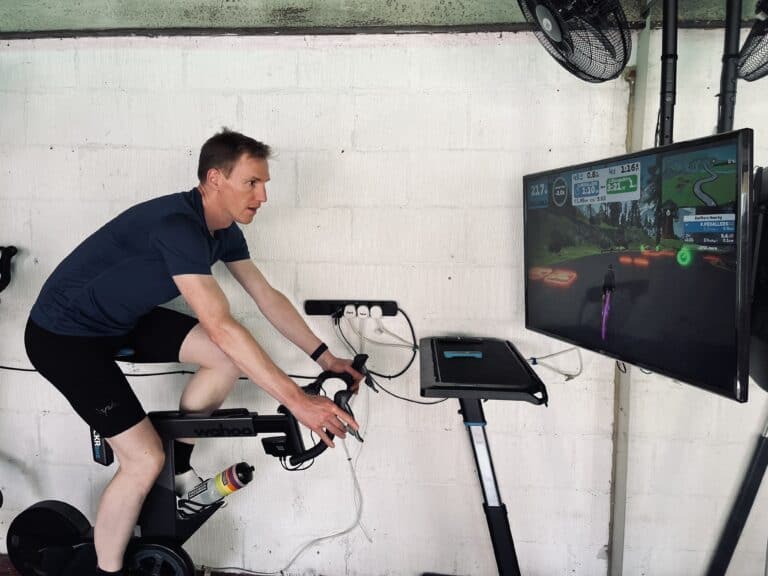
Getting Started
Choosing to start a cycling program is super exciting. There is so much research to be done that you’re ready to get going when you start.
But before you do anything else, you must know what you’ll need. Here is a basic guide to everything beginner indoor cyclists need to get going.
Finding the right bike
There are so many indoor bikes on the market that’ll make more than just your pedal stroke spin. Luckily, we’ve got a rundown of the basics to give you a head start on indoor cycling at home.
Bike Turbo Trainer
This is equipment that replaces the rear wheel of your bike. You then adjust the resistance and ride the indoor trainer as you would outdoors. This is a good option if you want an indoor bike with a real feel of outdoor riding.
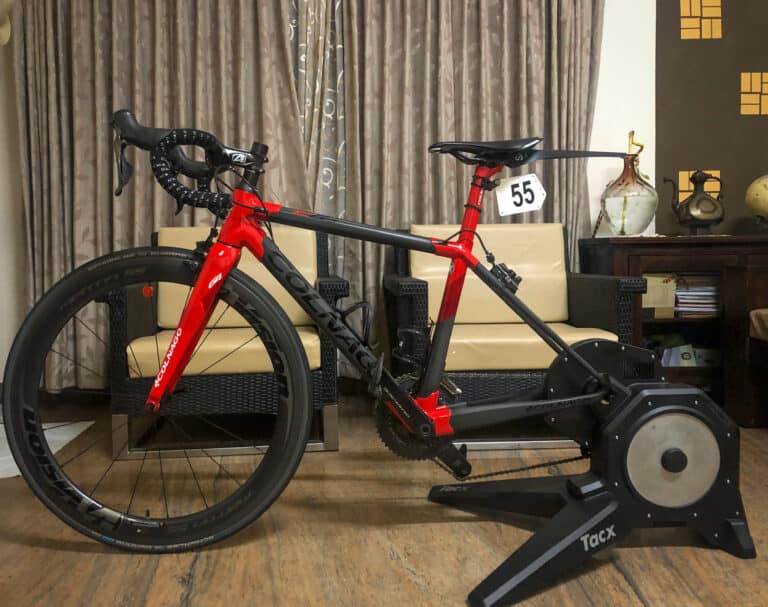
Smart Trainer
Much like bike trainers, smart trainers replace the back wheel of your bike (or, in some examples, a full-on ‘smart bike’).
They differ because smart trainers can connect to apps where the gradients and resistance change automatically based on the selected workout or trail. They also tend to be quieter than traditional bike trainers.
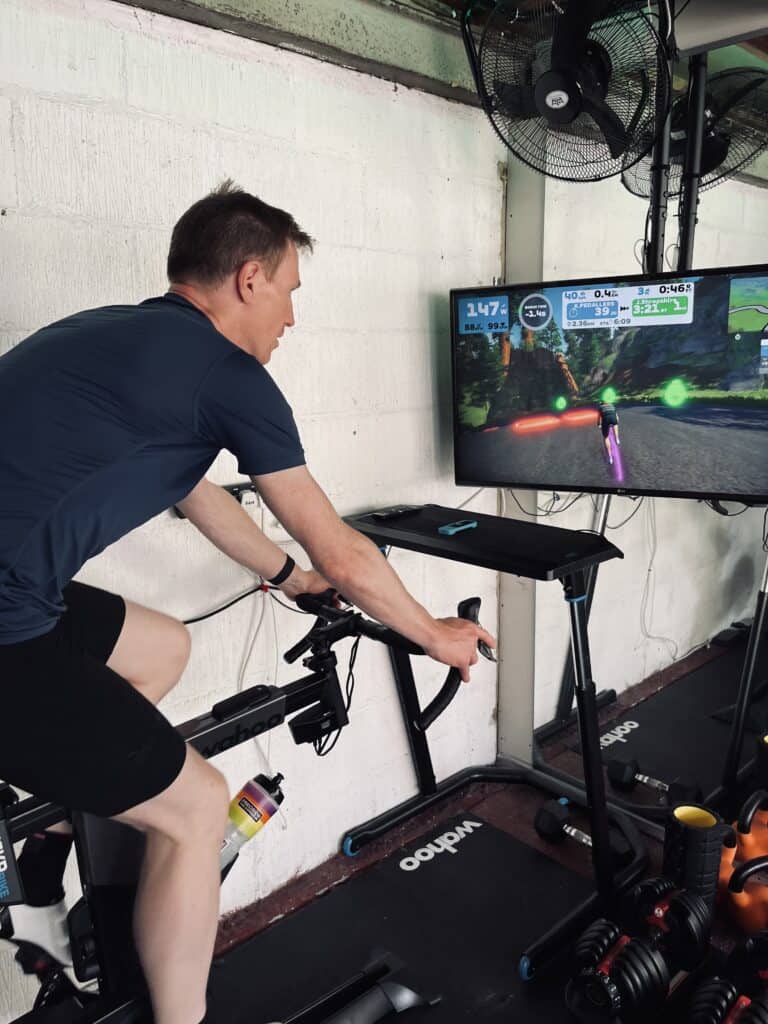
Spinning Bike
This is more a piece of gym equipment. It is a stationary bike that comes with all the components of an exercise bike in one. They usually have pre-set-up workouts you can select based on your goals and fitness level.
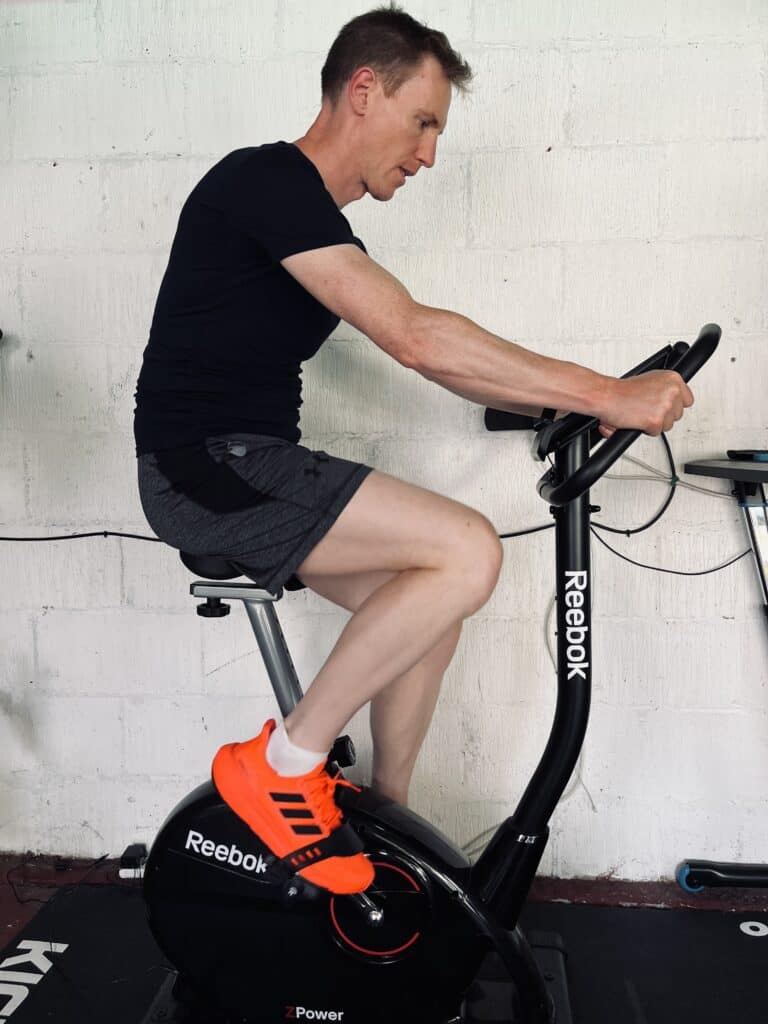
Recumbent bike
These are bikes you can sit down in. It works well for those with back issues who might struggle on upright bikes.
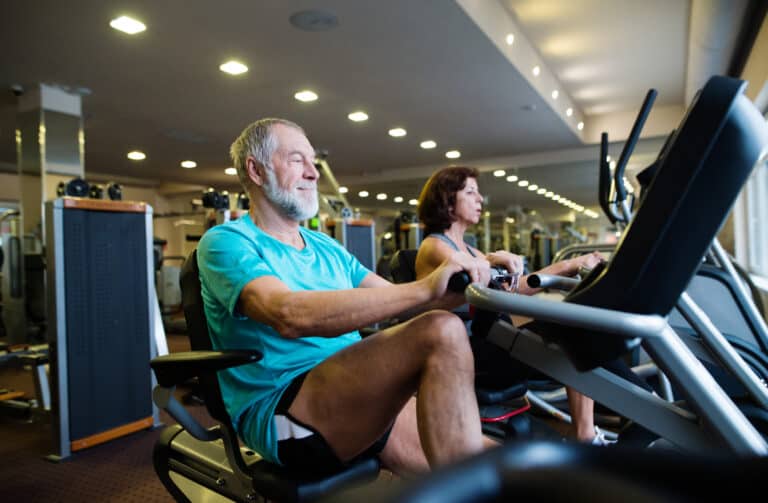
If you’ve got a road bike you’re comfortable with, a bike trainer is a perfect stepping stone for getting into indoor riding. But if you have no experience, then stationary bikes are the most convenient option. You set it up to your height, and off you go.
Now that the bikes are out of the way, what else might you need to begin your indoor cycling program journey?
Everything you need to start indoor cycling programs for beginners successfully
We hate to say it, but gear does make a difference. Here are some essentials to make your cycling program and training space a success:
- Bike shorts: Just because you’re not out on the road doesn’t mean you don’t need to dress for the occasion. Whether outdoor or indoor cycling, you must find the right bike shorts. That means shorts that fit well prevent chafing and help you sit longer.
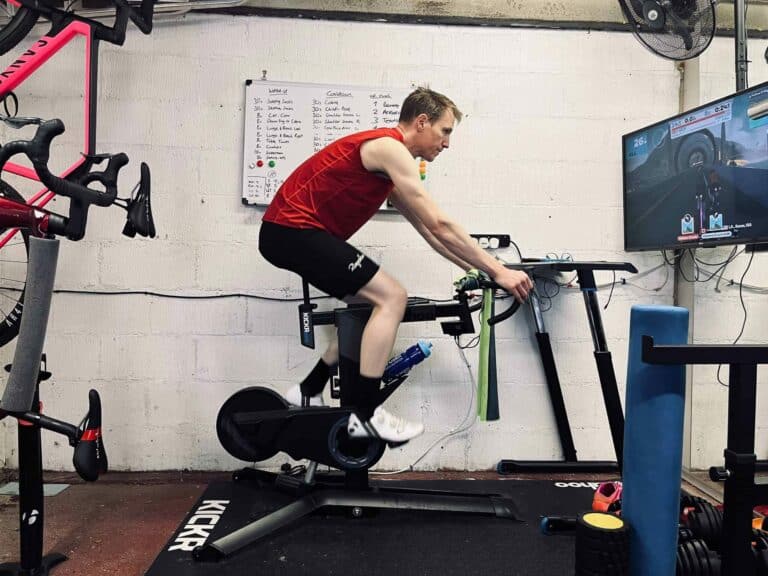
- Cleats: You might not need cleats on a stationary bike, but if you’re using a bike trainer with a road bike, then cleats are a must. They are great for keeping your feet in place through each pedal stroke and transferring power efficiently.
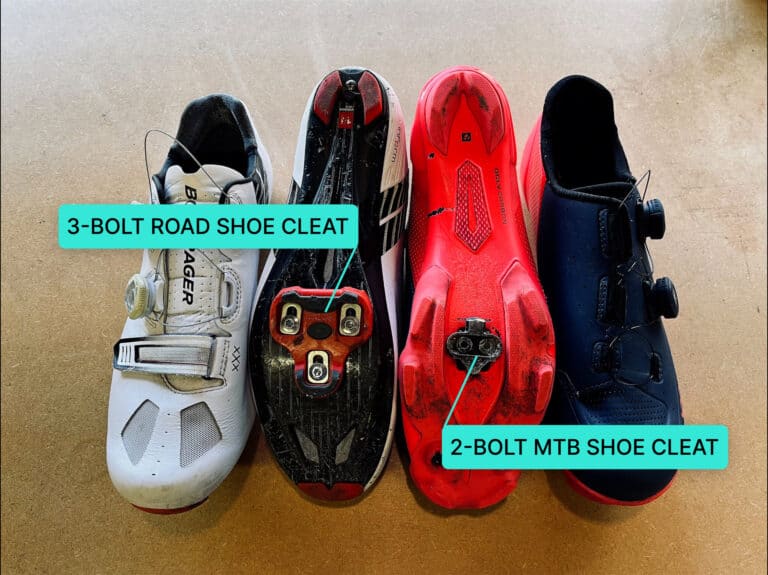
- Entertainment: One of the major benefits of an indoor cycling workout is that you can zone out. This means you can pump up the music or watch your favorite shows while completing your workout. We also recommend looking at online group classes if you want to feel like you’re in the zone with others.
- Floor mat: The equipment can be heavy if you’re on a stationary bike or a bike trainer. It’s always best to protect your floors with a mat. It’s also great for preventing slipping and wiping up sweat.
- Fan: Once you’re up and running for cycling indoors, the sessions get longer, and the heat turns up, so it’s always best to have a fan on hand to keep the sweat off.
- Towel: You generally don’t need a towel when riding on the road, but for indoor cycling, it’s a must! Some like to get their sweat on, but it can get a bit uncomfortable without the breeze outside helping you out, so keep a towel within reach (and remember to wash it often!).
- Thumbs up from the doctor: If you’re starting an indoor cycling routine to improve your health, getting the all-clear from your doctor is important. They can also help guide the duration and levels of routines to look into based on your health.
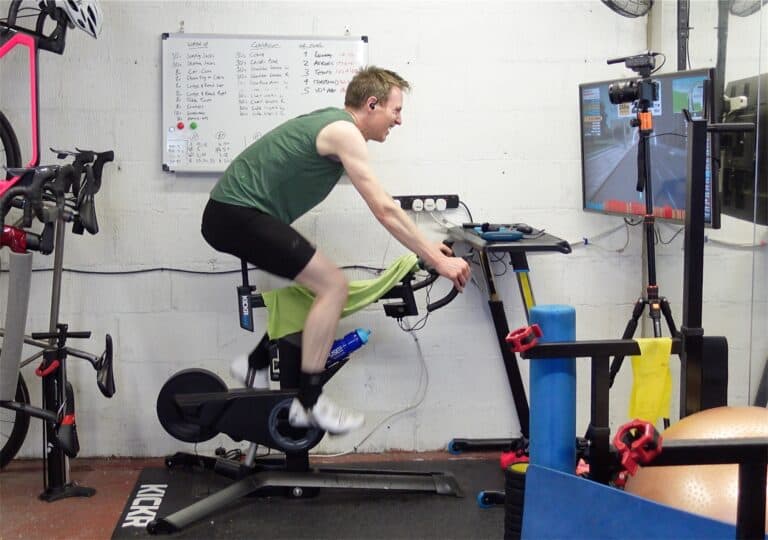
Beginning Your Workout
When you first start, the most important thing is not to overdo it. Consistency is key, and you can’t reach your milestones unless you choose a beginner’s workout for your aerobic fitness level and experience.
There’s no point in hopping on your stationary bike and racing like a bat out of hell only to be stuck on the couch for three days afterward.
So, before anything, find an indoor cycling workout you know you can do. In the beginning, you want something that is doable and won’t make you feel defeated. You want to keep the momentum up with a cycling training plan you can complete.
It’s also important to set aside time for your training plan. One of the main reasons beginners stop their cycling training plan is because they make excuses for not having the time.
So, before you even look at the indoor cycling workouts, look at your schedule and decide how much time you can dedicate to your workout.
Setting goals is also a must-do before finding your training plan. Once you have a clear and definitive goal, you are much more likely to put the work in to reach it. We recommend using SMART goals:
- Specific: keep your goal very specific to what you want to achieve.
- Measurable: Add in some measurable aspects like endurance level or weight.
- Achievable: Don’t overshoot it; your goal should be within reach to avoid disappointment.
- Relevant: Keep your goal relevant to what you want to achieve overall.
- Time-Bound: Your goal should have a time limit so you can measure the overall achievement.
For example, I will ride my stationary bike for 20 minutes three times a week with at least a level two incline for six minutes to help me lose 11 lbs in eight weeks.
As you can see, the goal is incredibly specific, and the intentions are set and achievable. A great way to implement SMART goals is to work with a vision board or affirmations. It keeps you going even when jumping on your bike is the last thing you want to do. But that set intention will get you there, so it’s important to keep things realistic.
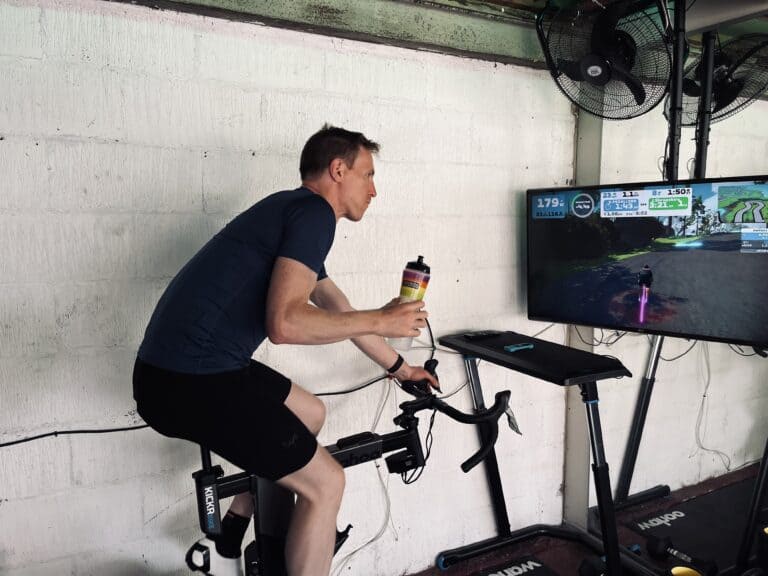
You should also think about your energy levels throughout the day. Finding the perfect beginner indoor cycling training plan is all good and well, but it becomes a chore if you’re doing the workout when you have no energy. You should schedule indoor cycling when you have the time and energy to complete it.
Finding a good warm-up routine is as important as finding the right indoor cycling program for beginners. Remember, you’ll be using a whole bunch of muscles you haven’t before, so get them warmed up before your indoor cycling routine.
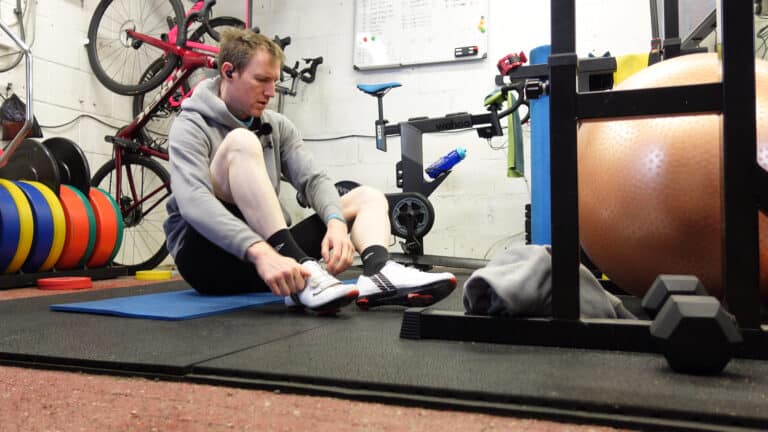
Switching up your indoor cycling workouts is also a good idea for beginners. It’s easy to find one and stick with it because it’s comfortable, but not having variety means you’re working the same muscles, and it can also get boring, which doesn’t help in the motivation department.
So, while you’re in the research phase of finding the right indoor cycling workouts for beginners, take the opportunity to pick two or three that you think align with your goals and that you might like to try.
Consistency and Results
As the saying goes, slow and steady wins the race. The same could not be true for finding an indoor cycling routine and consistently using it to achieve your goals.
At the start, it’s important to give your body time to adjust. That means taking things slow to feel how your body is responding. If you’re unable to walk straight for two days, then it’s time to slow down and adjust your indoor cycling training plan.
Look, there’s nothing wrong with pushing yourself with intense workouts; it’s actually encouraged, but not for every single workout, and definitely not when you’re at the start of your indoor training journey. You need to give yourself enough time and space to get used to indoor cycling and all that comes with it.
You also need to monitor your results. This isn’t to burst your bubble but to monitor whether your indoor training program is working for you. If you’re indoor cycling to lose weight, are your weigh-ins where you expect them to be? Or if you want to improve your cardiovascular health, have six weeks of training improved things? If not, why?

Everyone is different, and what works for one might not for the next, so don’t put too much pressure on yourself. The first step is getting your consistency down so that you’re doing the workouts as set out in your goals.
Breaks are a big part of consistency and form part of your overall indoor cycling training plan. Resting gives your body a chance to recover so that the next workout can be even better.
Getting a consistent balance of breaks and working up sweat leads to a much healthier workout program that you can maintain.
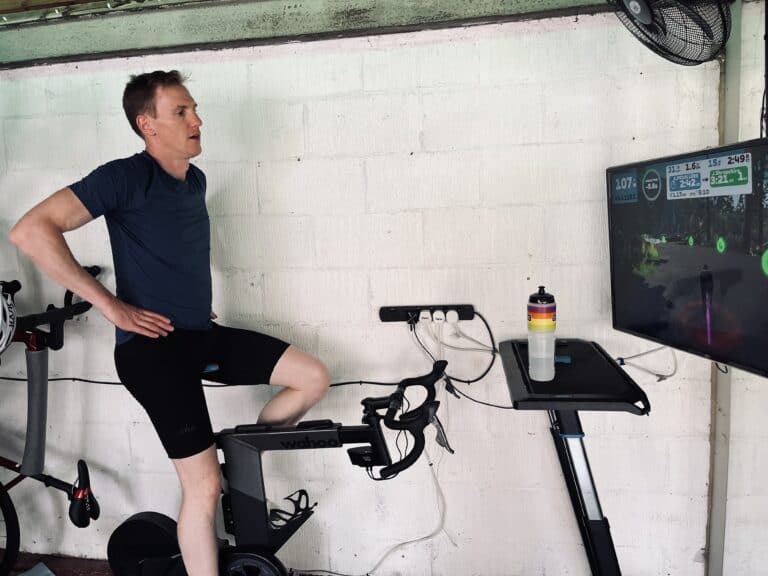
Tips for Choosing the Right Indoor Cycling Program
You should choose a program that fits your:
- Fitness level: You have to start somewhere. Select a program that suits your fitness level and won’t have you replacing date night with an ice bath.
- Goals: Your program needs to help you reach your SMART goals.
- Availability: This is where the scheduling comes in; you need time to do the program.
- Training needs: If you need more detailed guidance, find a program with that available.
- Top tip: Look at the different cycling training styles and find a trainer you think will work for you.
Next Steps: How to Get Started with Indoor Cycling
Indoor cycling is fantastic for your physical and mental well-being. But if you need more convincing, here are some benefits of indoor cycling. You might be surprised; it’s not only about the health advantages.
Also, if you are moving over from road riding, you might find the differences between outdoor and indoor cycling quite interesting.
As a beginner, we understand that getting to everything before you start can be daunting. Why not keep it simple with the best cycling apps for indoor training, where you can monitor your progress?
FAQ
How long should my workout be when starting with indoor cycling?
It depends on your overall fitness, but generally, it’s best to start slow and work your way up. A 15-30 minute workout three days a week is a good place to start for all fitness levels.
Are there different types of indoor cycling workouts?
Yes, there are different types of indoor training programs, including interval training, endurance rides, strengthening, and hill climbs, to name a few.
What is the best cycling workout for beginners?
The best cycling workout for beginners often combines easy rides and interval training. Here’s a simple plan:
- Warm-Up (10 minutes): Start at an easy pace to warm your muscles up.
- Easy Ride (20 minutes): Maintain a steady but comfortable pace. This should feel like a 5/10 on an effort scale.
- Intervals (20 minutes): Alternate between 2 minutes of faster riding (7/10 effort) and 2 minutes of easy riding (5/10 effort).
- Cool Down (10 minutes): Slow your pace gradually to allow your heart rate to decrease.
Is 20 minutes of indoor cycling enough?
A 20-minute indoor cycling session can be beneficial. High-intensity interval training (HIIT) within this timeframe can boost cardiovascular health, burn calories, and build endurance. As fitness improves, consider increasing workout duration or intensity. Consistency and quality are key.
Sources:
https://www.verywellfit.com/stationary-bike-workout-for-beginners-1230779
